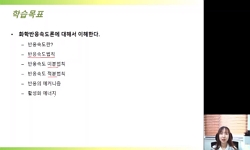This study researches into the factory management and human resources through the most representing cotton textile factory after liberation. Findings are as follows: First, cotton textile industry was to be recovered rapidly after liberation. There w...
http://chineseinput.net/에서 pinyin(병음)방식으로 중국어를 변환할 수 있습니다.
변환된 중국어를 복사하여 사용하시면 됩니다.
- 中文 을 입력하시려면 zhongwen을 입력하시고 space를누르시면됩니다.
- 北京 을 입력하시려면 beijing을 입력하시고 space를 누르시면 됩니다.

해방 직후 서울지역 대규모 면방직공장의 운영과 인력 실태에 관한 연구 = A Study on the Management and Human Resources of Massive Cotton Textile Factory in Seoul District after Liberation
한글로보기https://www.riss.kr/link?id=A103534750
- 저자
- 발행기관
- 학술지명
- 권호사항
-
발행연도
2006
-
작성언어
-
- 주제어
-
KDC
350
-
등재정보
KCI등재후보
-
자료형태
학술저널
- 발행기관 URL
-
수록면
187-214(28쪽)
- 제공처
-
0
상세조회 -
0
다운로드
부가정보
다국어 초록 (Multilingual Abstract)
This study researches into the factory management and human resources through the most representing cotton textile factory after liberation. Findings are as follows:
First, cotton textile industry was to be recovered rapidly after liberation. There was no big difference between Kyungsong Spinning Co. maintaining the continuation with a colony and other factories than that in this rapid recovery. This shows that skilled workers can do the factory management as much as reoperating existing facilities and maintain efficiency. Instead, the management achievement of Kyungsong factory of Toyobo consisted of the Japanese technicians before liberation even exceeds Kyungsong Spinning Co. in every aspect.
Second, nevertheless Kyungsong Spinning Co. contributed a crucial dedication in developing cotton textile industry through bridging the technical gap in South Korea after liberation and providing core skilled human resources. In case of Kyungsong Factory of Toyobo and Kyungsong Factory of Kanebo, there was a big technical gap after liberation, as there was no Korean skilled workers working here before liberation. However, technicians in Kyungsong Spinning Co. originally from Namman Spinning Co. played a key role in bridging technical gap and managing effectively.
Third, in case of skilled workers working facilities in charge of factory work, an experience in the massive cotton textile factory under the Japanese regime not the education in an educational institution became a crucial resource. Majority of them graduated only elementary school not offering professional textile-related knowledge.
Fourth, massive cotton textile factories inevitably experienced massive loss through Korean War. It was of necessity to have experienced management self-reliance and high-tech power for overcoming losses and reoperating factories. In this situation, Kyungsong Spinning Co. was successfully coming back, whereas Kyungsong Factory of Toyobo and Kyungsong Factory of Kanebo having neither of them were demolished.
목차 (Table of Contents)
- Ⅰ. 서론
- Ⅱ. 대규모 면방직공장의 운영
- Ⅲ. 대규모 면방직공장의 인력
- Ⅳ. 결론
- 참고문헌
- Ⅰ. 서론
- Ⅱ. 대규모 면방직공장의 운영
- Ⅲ. 대규모 면방직공장의 인력
- Ⅳ. 결론
- 참고문헌
- Abstract
동일학술지(권/호) 다른 논문
-
- 한국경영사학회
- 김동운(Dong Woon Kim)
- 2006
- KCI등재후보
-
- 한국경영사학회
- 김병기(Pyung Kee Kim)
- 2006
- KCI등재후보
-
- 한국경영사학회
- 김신(Shin Kim)
- 2006
- KCI등재후보
-
- 한국경영사학회
- 김억헌(Uk Hum Kim)
- 2006
- KCI등재후보





 KCI
KCI 스콜라
스콜라




